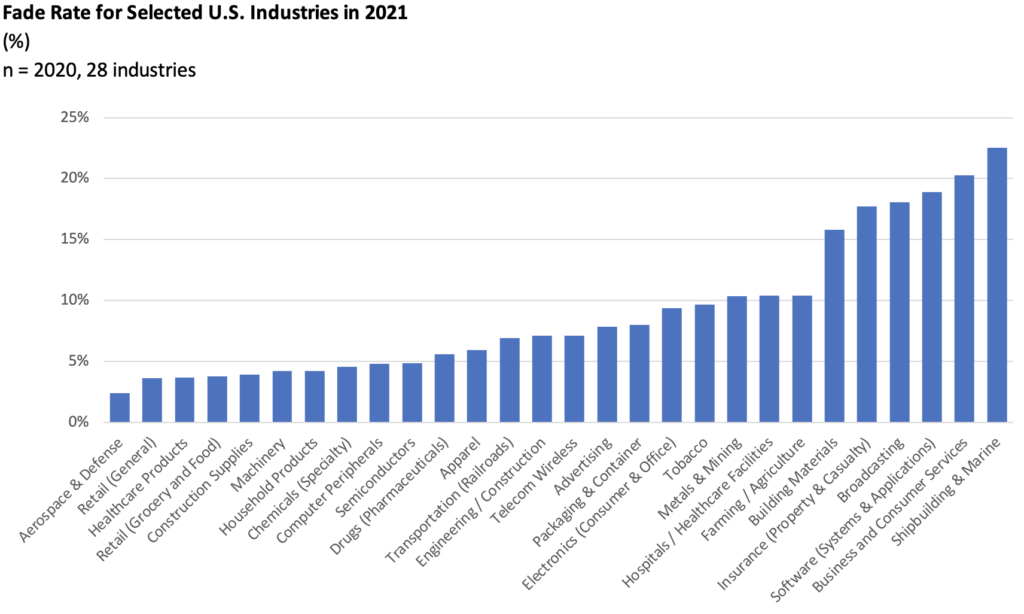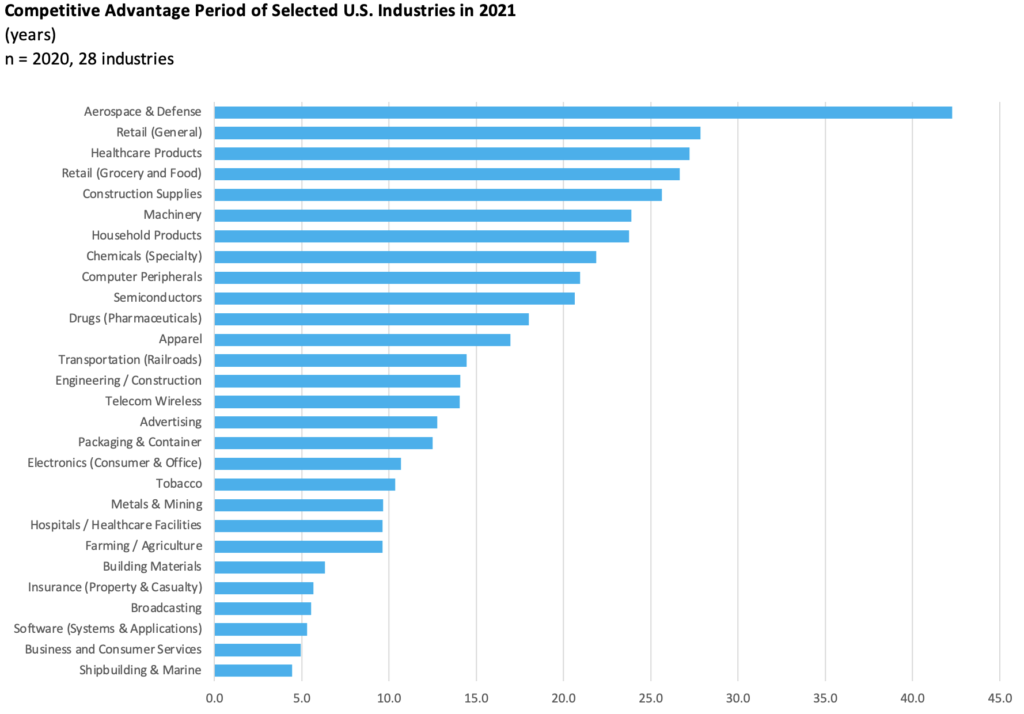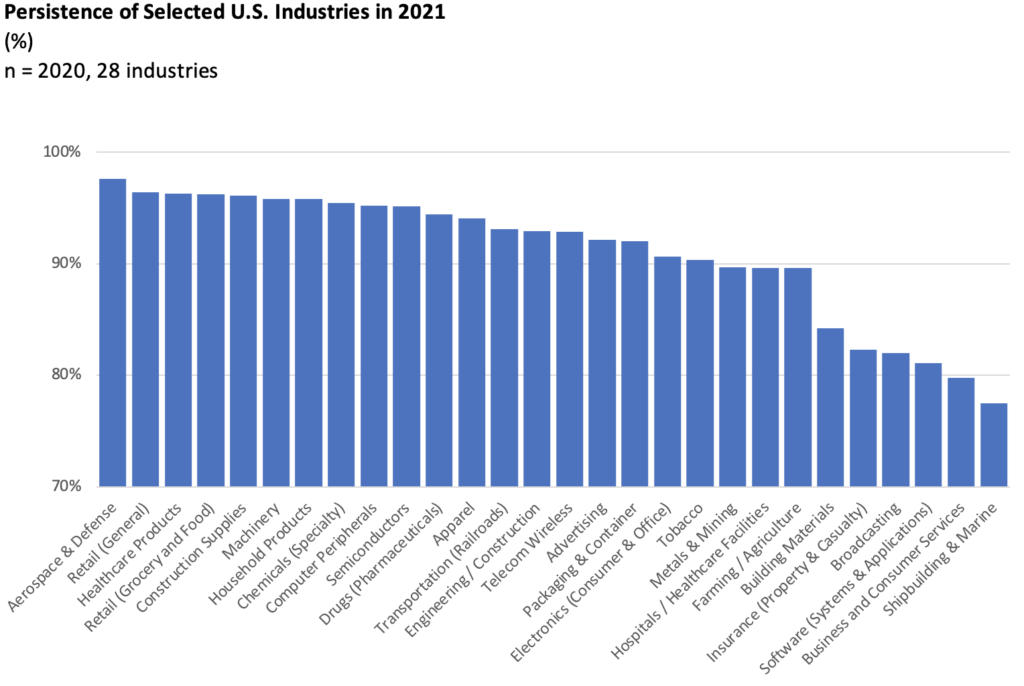Short answer: not indefinitely. How long can you expect a competitive advantage to last when planning for growth or conducting a valuation? This article aims to provide some numbers and shed a helpful perspective.
WHY IT MATTERS
Competitive advantage decays over time. Some analysts assume that competitive advantage is indefinite to simplify forecasts. The problem with this simplification is that it masks the true fading impact of competitive advantage on profitability and value over time, which in some cases can be off by several $million.
Knowing this information is essential to the accuracy of analysis, and three measures can be instrumental.
FADE RATE
A straightforward measure is the fade rate, f. It is the exponential decay rate at which ROIC converges to the cost of capital, where (ROIC – WACC) equals zero (1) – i.e., how quickly profitability is expected to fade. The fade rate can be incorporated into the terminal value in a DCF model for a more accurate valuation.

The fade rate can also be used in a fundamental pricing model of the firm based on economic profit for quick back-of-the-envelop calculations.

The fade rate f varies by industry and by company. Exhibit 1 presents the fade rate for selected industries to illustrate the concept.

Competitive Advantage Period
Another useful measure is the expected competitive advantage period (CAP), which equals 1/f (2). The CAP is an intuitive measure that tells you how long the competitive advantage is valid. The CAP for U.S. stocks ranges between 10 and 15 years. However, individual company CAPs or industry CAPs can vary from 0–2 years to over 20 years. Exhibit 2 illustrates the CAP of selected U.S. industries.

Effective growth plans consider the duration of competitive advantage for realistic forecasts of value over reasonable periods - otherwise and typically too short by most analysts and strategic planners.(3)
Persistence
A third measure is persistence.
“A truly great business must have enduring ‘moat’ that protects excellent returns on invested capital.”
– Warren Buffet
The expression of ‘endurance’ is persistence, defined as the complement of fade ( r = 1 – f) (4). Highly persistent industries or companies fade slower than the average (Exhibit 3).

CONCLUSION
When determining whether a growth strategy is a good investment or a company is priced correctly, it is helpful to know the competitive advantage period priced into its value.
Fade rate, competitive advantage period, and persistence are measures of the same underlying concept: the sustainability of competitive advantage. They offer significant insight into planning for growth and yield a more accurate valuation of a company.
Citations
- 1 "Beyond Earnings," by David A Holland and Bryant A. Matthews, 2018, Wiley, Hoboken, NJ.
- 2 Ibid.
- 3 "Competitive Advantage Period: The Neglected Value Driver," by Michael Mauboussin and Paul Johnson, Credit Suisse, 1997.
- 4 Holland and Matthews.

